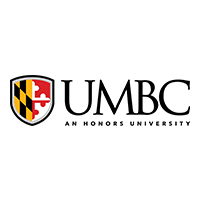Below is a summary of the abstract you submitted. Presenting author(s) is shown in bold.
If any changes need to be made, you can modify the abstract or change the authors.
You can also download a .docx version of this abstract.
If there are any problems, please email Dan at dar78@pitt.edu and he'll take care of them!
This abstract was last modified on April 21, 2015 at 5:46 p.m..

Bacteriophage genomes are notoriously devoid of functional annotations. This limits the interpretability of newly sequenced bacteriophage genomes, as well as the ability to leverage bacteriophage genomes for the automated inference of biological knowledge. The in silico phage hunters courses offered by many SEA-PHAGES participating schools provide a unique opportunity to address the lack of gene product annotations by leveraging the enthusiasm of undergraduate researchers characterizing their own bacteriophage genome. To this end, the SEA-PHAGES consortium has established guidelines for functional annotation, but these are self-enforced and often rely on long chains of orthology inference. Furthermore, current guidelines do not provide well-defined standards for some aspects of the functional annotation process, such as naming conventions or the systematic identification of references. The Gene Ontology (GO) is a global community effort to annotate gene products across all domains of life. As such, it provides robust definition of terms describing gene products and their relationships, as well as unique identifiers for gene products, their associated terms and the type of evidence supporting those associations. In addition, the GO provides rigorous protocols for annotation, extensive documentation and a wide array of tools for knowledge inference on annotated terms.
Here we report on a pilot experience to implement GO annotations in an in silico phage hunters course. To enable annotations based on orthology assessments by undergraduate curators, we developed a GO Reference based on the SEA-PHAGES guidelines that can be cited as the source for annotation from an ortholog to a bacteriophage gene. To streamline the annotation process, we made use of the GONUTS wiki interface and organized an in-class CACAO annotation competition. Collectively, student teams made over 30 GO annotations, including experiment-backed annotations on several phages and bacteria. This pilot experience has shown that GO annotations provide a suitable means to perform high-quality functional annotation on bacteriophage genomes and that exposing students to the idea of ontologies in biology and related concepts is in itself a valuable outcome of the experience. By leveraging a publicly available and open tool for the annotation, students become plainly aware of the impact of their work in the scientific community. Upholding the standards for GO annotations means that students become intimately familiar with the SEA-PHAGES procedures for functional annotation and must read several research articles to annotate gene products, enhancing their reading skills and their critical understanding of functional orthology across domains of life. We will discuss the perceived benefits of this pilot experience, as well as practical components associated with it, such as the amount of time that should be allotted to it and any other practical considerations the audience may have.


